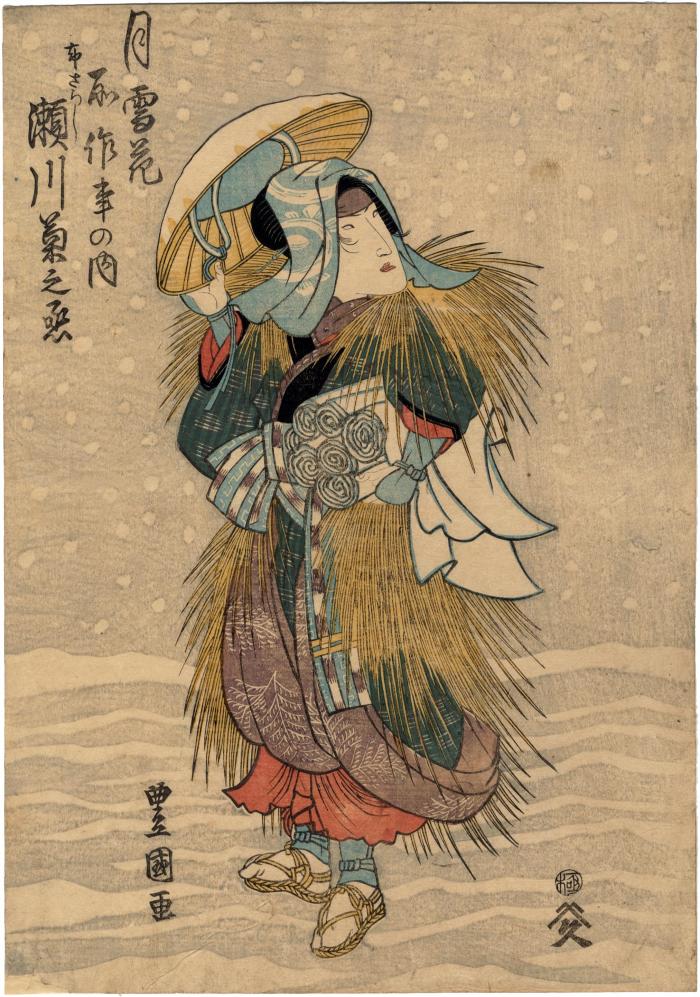Utagawa Toyokuni II (二代目歌川豊国) (artist 1777 – 1835)
Segawa Kikunojō V (瀬川菊之丞) in the role of a Nuno-zarashi (布ざらし) dancer from the series The Moon, Snow and Flowers (Tsuki, Yuki, Hana, Shosa-goto No Uchi - 月雪花 所作事の内)
08/01/1830
10 in x 14.5 in (Overall dimensions) Japanese woodblock print
Signed: Toyokuni ga (豊国画)
Publisher: Yamamotoya Heikichi
(Marks 595 - seal 04-007)
Censor's seal: kiwame
Ritsumeikan University
Ritsumeikan University - print from the series representing the moon
British Museum - a Nuno-zarashi dancer by Shun'ei
Art Institute of Chicago - Shunshō print of a Nuno-zarashi dancer
Museum of Fine Arts, Boston - Harunobu print of one such dancer
Honolulu Museum of Art - another Harunobu print
British Museum - Morita Kanya performing this dance
Hankyu Culture Foundation This print represents a Nuno-zarashi dancer in the snow between venues. Notice how 'she', i.e., the onnagata is carrying five long rolls of bleached cloth under her right arm. These are the tools of her trade.
The curatorial files at the British Museum give a description of what a Nuno-zarashi dancer is and does.
‘Nuno-zarashi’ is not the name of a particular dance, but rather a technique seen in Kabuki and traditional Japanese dance, which involves the waving about of two long strips of cloth in the air so as not to let them touch the ground. The performer usually wears high ‘geta’ clogs. It is based on the idea of women washing cloth and then bleaching it in the sun, hence ‘nuno’ (布, ‘cloth’), and ‘sarasu’ (晒す, ‘to expose to the air’). This technique is seen, for example, in the 18th century ‘onnagata’ dance ‘Sarashi Sanbaso’ (晒三番叟) and in such 19th century works as ‘Sarashime’ (晒女, also called ‘Omi no Okane’ 近江のお兼) and ‘Echigo Jishi’ (越後獅子).****
The earliest known painting of a Nuno-zarashi dancer was created by Hanabusa Itcho (1652-1724).
****
The popularity of this image has even been continued into 20th century imagery.
****
Nuno-zarashi is often romanized as Nuno-sarashi. We have chosen the former, but either is acceptable.
Yamamotoya Heikichi (山本屋平吉) (publisher)
mitate-e (見立て絵) (genre)
actor prints (yakusha-e - 役者絵) (genre)
Segawa Kikunojō V (五代目瀬川菊之丞: 11/1815 to 1/7/1832) (actor)
